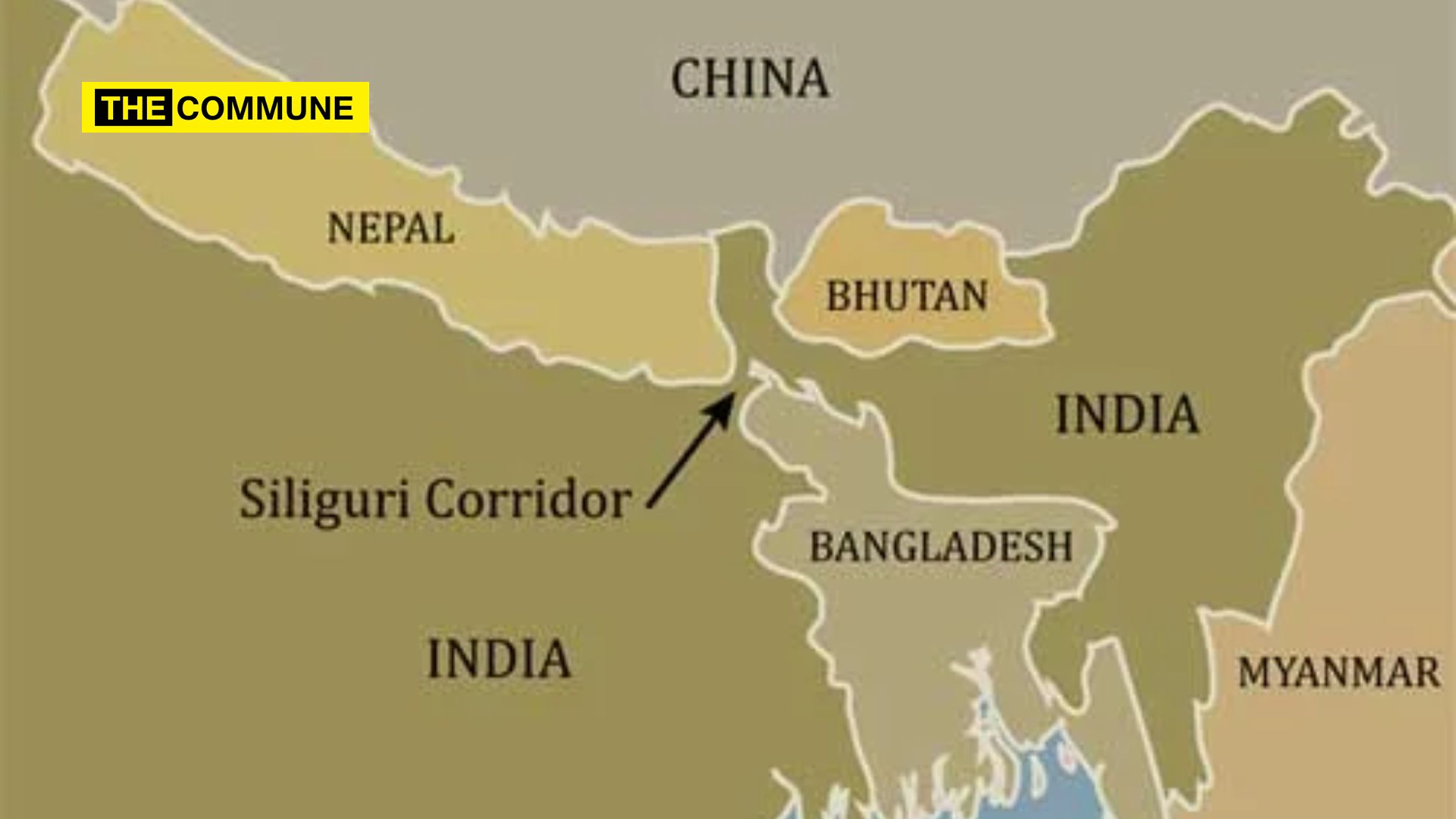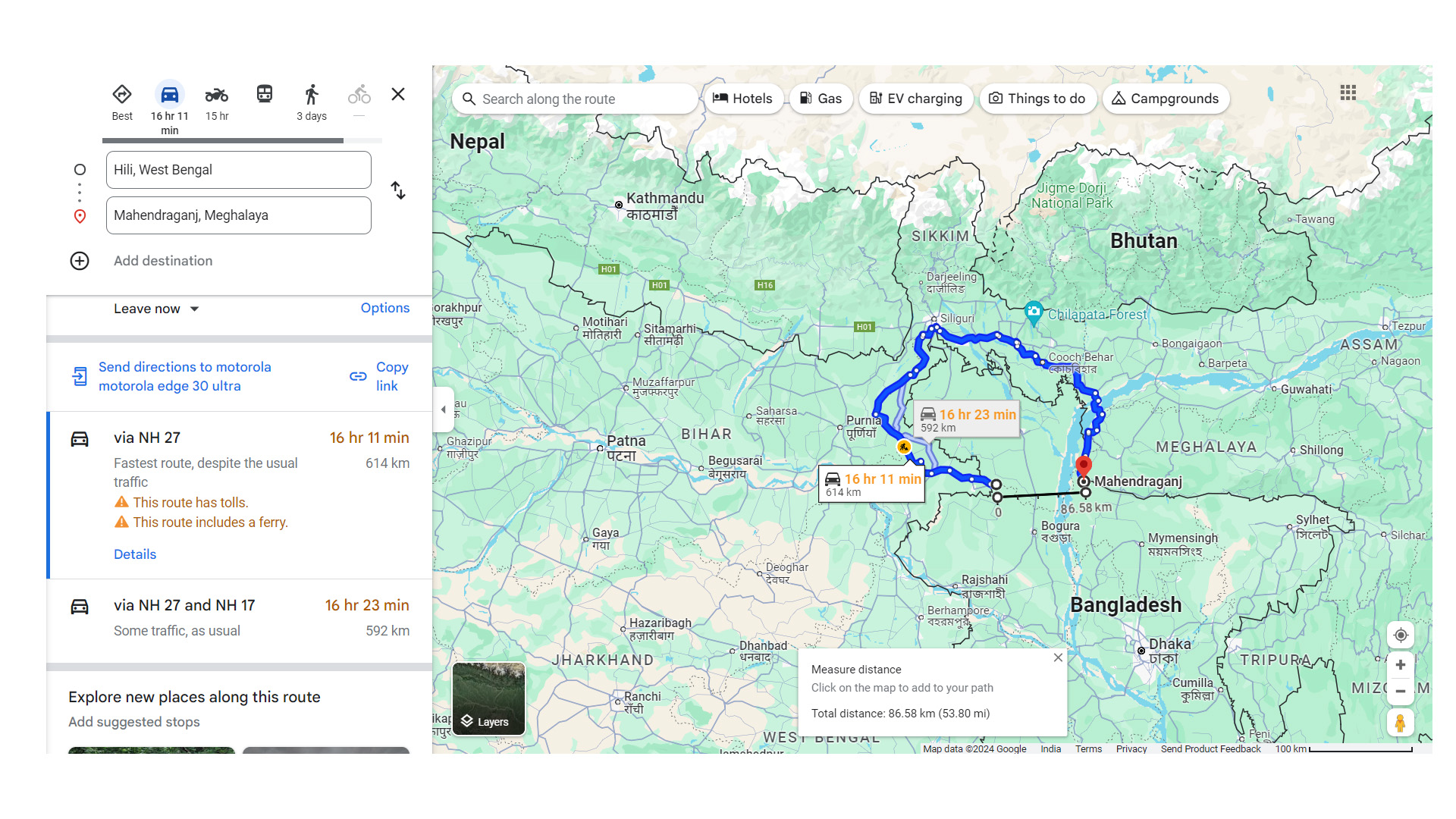
India’s strategic interests in South Asia are closely tied to its geographic, economic, and security concerns. One of the most pressing territorial issues involves land reclamation in northern Bangladesh, particularly in the regions historically connected to Hili in West Bengal and Mahendraganj in Meghalaya. This potential reclamation could yield significant advantages for India, addressing both longstanding demographic concerns and the critical “Chicken’s Neck” problem while also fostering a win-win situation for both India and Bangladesh.
The “Chicken’s Neck” Problem: A Strategic Vulnerability
The “Chicken’s Neck,” also known as the Siliguri Corridor, is a narrow strip of land connecting India’s northeastern states to the rest of the country. At its narrowest point, it is just about 22 kilometres wide, making it one of the most strategically vulnerable regions in India. The corridor is bordered by Nepal, Bhutan, and Bangladesh, placing it at the intersection of multiple international borders.
This narrowness poses significant security risks. In the event of geopolitical tensions or conflicts, the Siliguri Corridor could easily be cut off, effectively isolating the northeastern states from mainland India. This vulnerability has been a longstanding concern for Indian defence planners, and reclaiming land in northern Bangladesh could significantly alleviate this problem.
By reclaiming the territories in Hili and Mahendraganj, India would gain better control over a broader expanse of land, effectively widening the access routes to the northeastern states. This would not only reduce the strategic risks associated with the Siliguri Corridor but also enhance India’s overall border security, ensuring that crucial transport and communication links remain intact even in times of crisis.

Demographic Changes And Historical Context
The regions of Hili in West Bengal and Mahendraganj in Meghalaya have witnessed significant demographic changes over the past several decades. Following the partition of India in 1947 and the creation of East Pakistan (now Bangladesh), these regions experienced a shift in population dynamics. The influx of people and the redrawing of borders led to a complex demographic landscape that, in some cases, has fueled tensions and challenges related to identity, land ownership, and resource allocation.
Reclaiming these territories would allow India to address these demographic concerns by reintegrating historically Indian lands and populations back into the country. This could help stabilize the region by ensuring that the local populations, who often have cultural and historical ties to India, are reconnected with the Indian state. Additionally, India could implement policies aimed at inclusive development, infrastructure improvements, and social integration, thereby fostering a more cohesive and stable demographic environment.
Strategic Advantages: Reducing Distance And Enhancing Connectivity
One of the most immediate and tangible benefits of reclaiming these territories is the drastic reduction in travel distance between key points in West Bengal, Assam, and Meghalaya. Currently, the journey around the borders of West Bengal, Assam, and Meghalaya spans approximately 614 kilometers. However, by reclaiming the land in northern Bangladesh, this distance could be reduced to just 85 kilometers, providing a more direct route between these regions.
This reduction in distance would have profound implications for both civilian and military logistics. It would enable faster and more efficient movement of goods, people, and military personnel between the northeastern states and the rest of India. This improved connectivity would also stimulate economic activity in the region, encouraging trade, investment, and tourism, which in turn could contribute to the overall development of the northeastern states.
A Win-Win Situation for India and Bangladesh
The reclamation of land in northern Bangladesh could be framed as a mutually beneficial arrangement between India and Bangladesh. For India, the advantages are clear: enhanced border security, improved connectivity, and greater regional stability. For Bangladesh, the benefits could come in the form of increased economic cooperation, infrastructure development, and strengthened bilateral relations with India.
Bangladesh has historically maintained strong ties with India, and resolving this territorial issue could further solidify this relationship. Bangladesh could benefit from Indian investments in infrastructure projects, cross-border trade, and regional development initiatives. Additionally, a stable and prosperous northeastern India would serve as a valuable trading partner and ally for Bangladesh, fostering a more integrated and cooperative South Asian region.
Moreover, by addressing and resolving historical territorial disputes through peaceful and diplomatic means, both India and Bangladesh would set a positive example for regional cooperation and conflict resolution. This would enhance their standing in the international community and contribute to the overall stability and security of South Asia.
Reclaiming the land in northern Bangladesh from Hili in West Bengal and Mahendraganj in Meghalaya offers India significant strategic advantages, particularly in addressing the “Chicken’s Neck” problem and improving regional connectivity. By reducing the distance between key regions, enhancing border security, and addressing demographic concerns, India would strengthen its position in South Asia while fostering a win-win situation for both India and Bangladesh. This strategic reclamation, if handled diplomatically and with mutual cooperation, could mark a new chapter in Indo-Bangladeshi relations and contribute to the long-term stability and prosperity of the region.
Ganesh Kumar is a geo-political analyst.
Subscribe to our channels on Telegram, WhatsApp, and Instagram and get the best stories of the day delivered to you personally.




